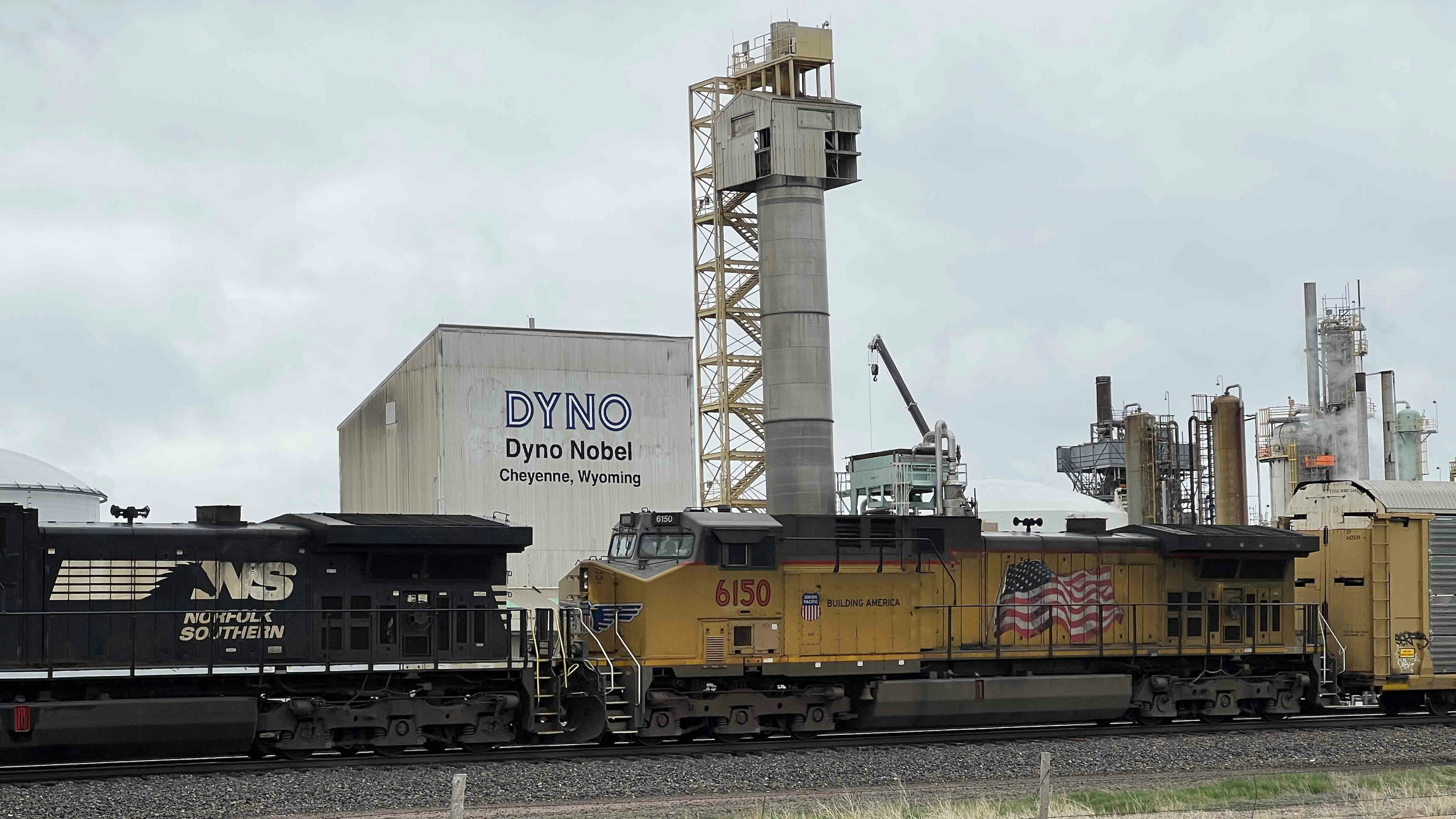Dyno Nobel, which manufactures a key ingredient in fertilizer and explosive mixtures used in mining, quarrying and civil construction, was fined nearly $400,000 Monday by the U.S Environmental Protection Agency for safety violations at its Cheyenne plant.
While the EPA says the fine is related to the company’s handling of explosive material, it’s not connected to an incident last year when 30 tons of ammonium nitrate fertilizer that left the Dyno Nobel plant in Cheyenne disappeared last year.
The fertilizer left the manufacturing facility April 12, 2023, by rail. Two weeks later, the chemical was discovered missing from the railcar.
“The EPA administrative settlement announced today has no relationship to the reported loss of ammonium nitrate in 2023,” said EPA spokesman Richard Mylott in Denver, in a statement to Cowboy State Daily.
Clean Air Act
Dyno Nobel, which is a business unit of Australian based industrial chemicals giant Incitec Pivot Ltd., filed a report with the National Response Center on May 10, 2023, about the missing fertilizer.
The railcar carrying the ammonium nitrate was found empty when checked in California. Ammonia nitrate is primarily used as a fertilizer, but it was also a key chemical used in the bomb that terrorist Timothy McVeigh built to blow up a federal building in Oklahoma City in 1995.
Spokespersons with Union Pacific, which was hauling the fertilizer, and U.S. Department of Transportation, couldn’t be reached for comment.
On Monday, EPA announced that the Cheyenne company agreed to pay a $394,906 civil administrative penalty as part of the company’s violations of the Clean Air Act related to chemical accident prevention practices at the facility.
A Dyno Nobel spokeswoman told Cowboy State Daily that the EPA safety investigation began seven years ago at the Cheyenne plant.
In 2018, EPA notified Dyno Nobel that it believed certain safety practices and mechanical requirements were not being met at that facility, the spokeswoman said.
“While we contested parts of EPA’s assessment, we worked extensively to provide factual information to EPA to address their concerns over a four-year period,” she said.
In 2023, as a final step in this process, the company began working to implement safety and mechanical adjustments at the facility and agreed to a financial resolution.
“The issues raised in the 2017 assessment did not have any negative impact on the local environment, the surrounding community or the health and safety of our employees,” she said.
Corrected
Dyno Nobel produces commercial explosives and provides professional blasting services.
The EPA inspection of the Dyno Nobel facility revealed several violations of an accident prevention program, called the Risk Management Program, related to the management of ammonia and chlorine, and deficiencies in the handling of safety information, performing hazard analysis, maintaining mechanical integrity and operating procedures.
EPA said that the company has corrected all deficiencies to reduce the possibility of an accidental release of chemicals.
“The recent agreements between the EPA and Dyno Nobel resolve alleged Clean Air Act violations of risk management program requirements EPA observed at the company’s Cheyenne plant during an inspection that occurred before the 2023 transportation event,” Mylott said.
EPA is not aware of the current status of the DOT investigation into the 2023 incident, he said.
The Dyno Nobel facility is subject to Clean Air Act RMP regulations because it stores and processes large quantities of ammonia and chlorine at its westside Cheyenne plant. The RMP rule requires facilities holding more than 10,000 pounds of ammonia or 2,500 pounds of chlorine to develop a site-specific risk management plan and submit that plan to EPA.
Pat Maio can be reached at pat@cowboystatedaily.com.





